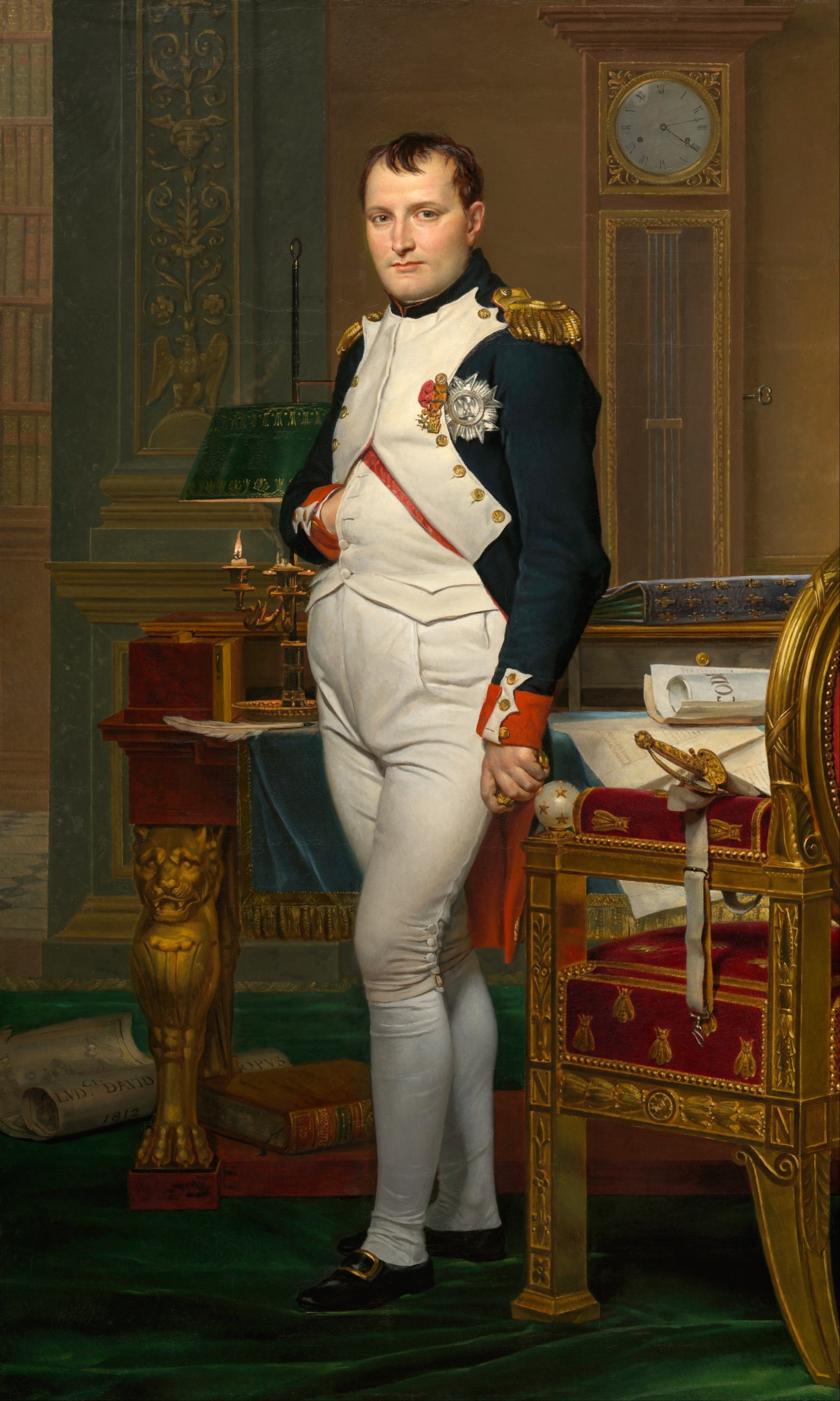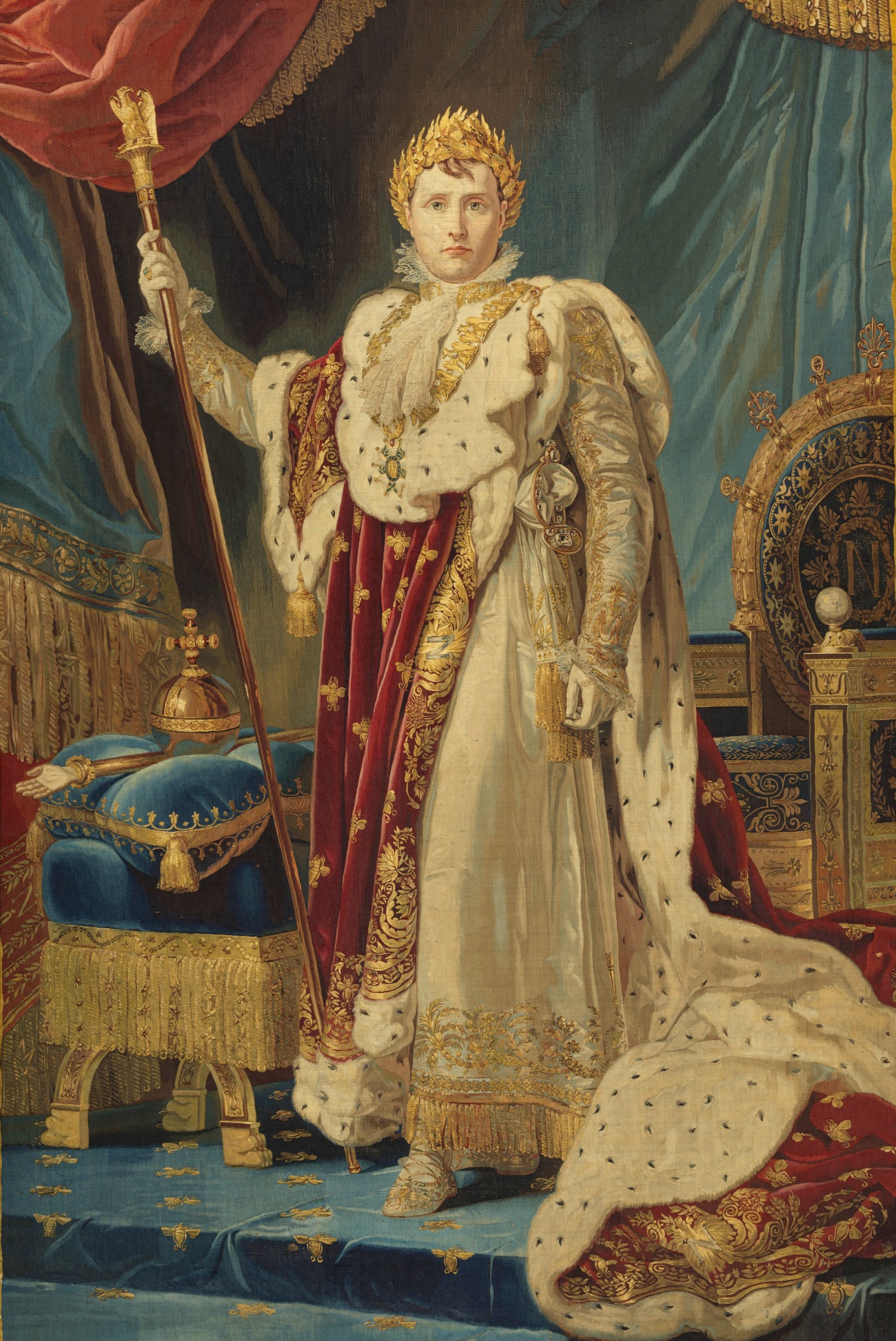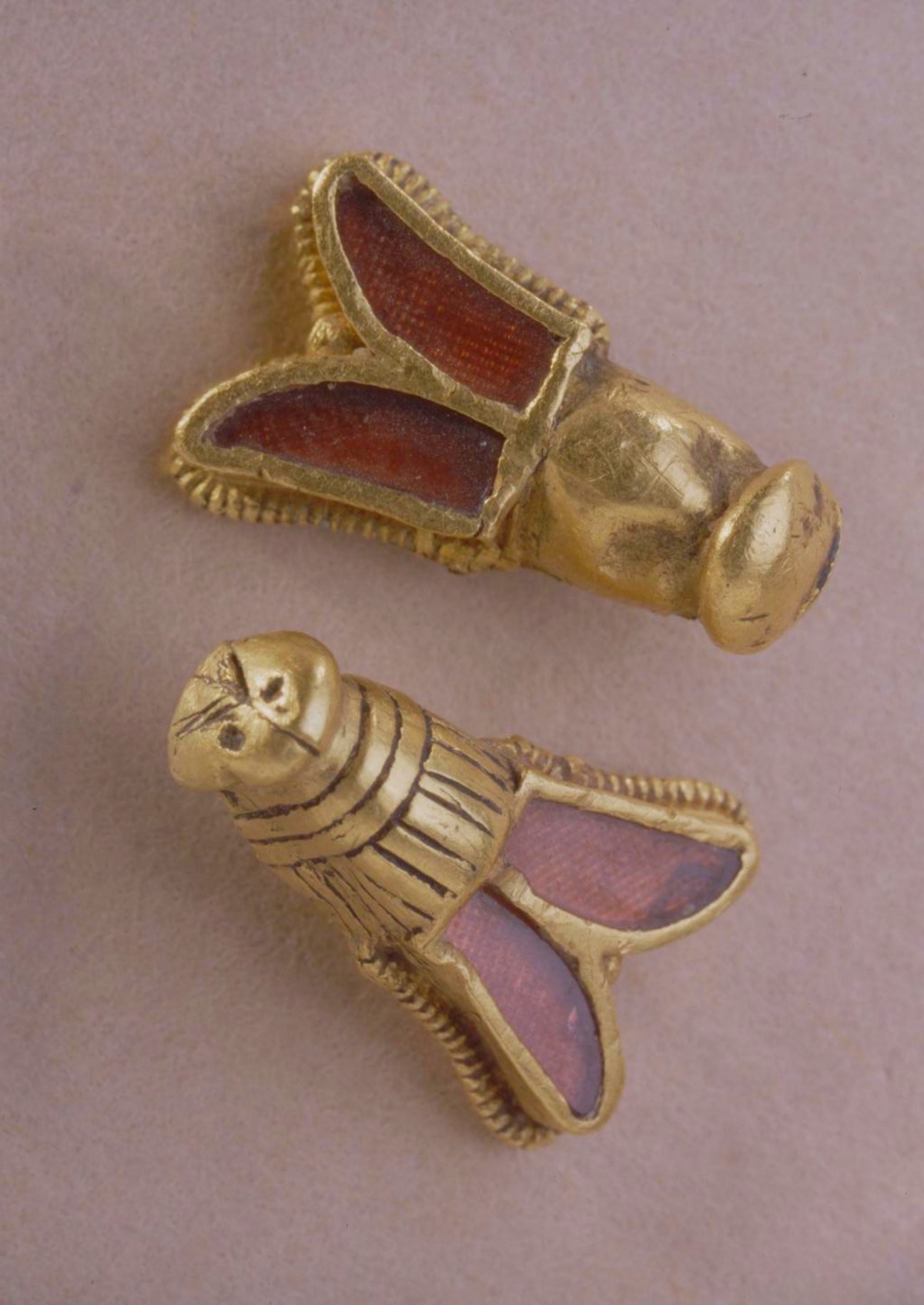The Bees That Inspired Napoleon
He adorned his robes, chairs, fireplaces, coat of arms, and much more with these insects.
Bees in all kinds of designs have been making a comeback as of late. You can find them on fabrics, clothes, jewelry, wallpapers, home decor items, and even on toiletries these days. The bee has long been a symbol of elegance and royalty, and there’s a reason for that. Napoleon Bonaparte I famously incorporated these small insects into his palaces and his regalia, often in gold to signify that they were designs of stately importance. But, the tradition of royal bee symbols started long before he came to power at the end of the 18th century. Here’s how a hoard of ancient bees originally inspired him.

Napoleon the Upstart
Napoleon was born on the then-Italian island of Corsica in 1769. The French forces annexed the island that same year. When Napoleone di Buonaparte (as he was then known) was of school age he attended school on the mainland of France and later changed his name to sound more French and less Italian. His great ambitions after graduating from French military academy led him to pursue greater and greater positions of power. He was inspired by the generals and kings that went before him.
He rose to became a general, then First Consul in Revolutionary France, then through a coup d’état was voted in as a lifetime appointment 1802 and then crowned himself emperor in 1804. At his coronation he was already using the bee as a symbol on his royal items.

Royal Insect Regalia
Napoleon I was inspired by the funeral offerings of King Childeric I who died in either 481 or 482. This Frankish ruler presided in northern Gaul under Roman rule in what is now the Netherlands and the kingdom later extended into parts of current-day Belgium, Italy, and other areas after a series of conquests. His tomb, containing a cache of his royal objects, was discovered in 1653 in Tournai (in modern-day Belgium).
Inside this cache was a gold ring with an insignia which was later stolen along with many of the other artifacts in 1831, though a replica survives today. And, there were also a set of gold bees in the funerary find as well.

The artifacts were given to Archduke Leopold William of Habsburg who asked that a study of the artifacts be made in writing in 1655. In 1665 the items and the study were given as a gift to King Louis XIV of France.
Since the Franks are considered to be the ancestors of the French this find and the gift have special meaning. These little jeweled wings were made of thinly-cleaved garnet surrounded by gold. However, they were not considered great works of art by Louis XIV who stored them away.

Some have speculated that they were cicadas and not bees. Cicadas were a popular symbol across Europe and in many eras. Charlemagne used cicadas for his royal symbols in the 8th and 9th centuries and Napoleon I borrowed heavily from the earlier king’s choices of royal regalia icons. Given Childeric’s I funeral treasure it’s clear that bugs had a long history of being seen as royal by the heads of Europe, a tradition continued by Napoleon I.
Why Insects?
The bee was seen as a hard worker, a noble creature, and was associated with honey and thus the sweet things of life. In Roman mythology bees were associated with immortality. Cicadas were symbols of immortality in Hun culture as well as in Ancient Egypt. These symbols were meant to be emblematic of the qualities of the nobility.
Childeric I’s garnet insects would likely have been used on a royal cloak or on his horses’ regalia. The East Germanic brooch below dates from 350–450 AD and is made from an alloy, showing that it was not only royals who wore these insects are adornment.

After having turned down a number of animals as symbols, as well as the fleur-de-lis, an advisor and former co-Consul (Jean Jacques Régis de Cambacérès) who was familiar with Childeric I’s gold items suggested the bee as a symbol and proffered that the bees turned upside down had actually inspired the fleur-de-lis centuries before, cementing the bees as a part of French history in the court of Napoleon I. The bee was used as a background design with the eagle as the main emblem on his coat of arms.
Napoleon I wanted a clean break from the symbols of the most recent Bourbon dynasty in France, while setting himself apart as a ruler on unquestionable power. However, after a series of military defeats he was forced to resign and exiled in 1814. He made a brief comeback with help from his supporters in 1815, but was again exiled and died only 6 years later from stomach cancer.
SKM: below-content placeholderWhizzco for DOT

